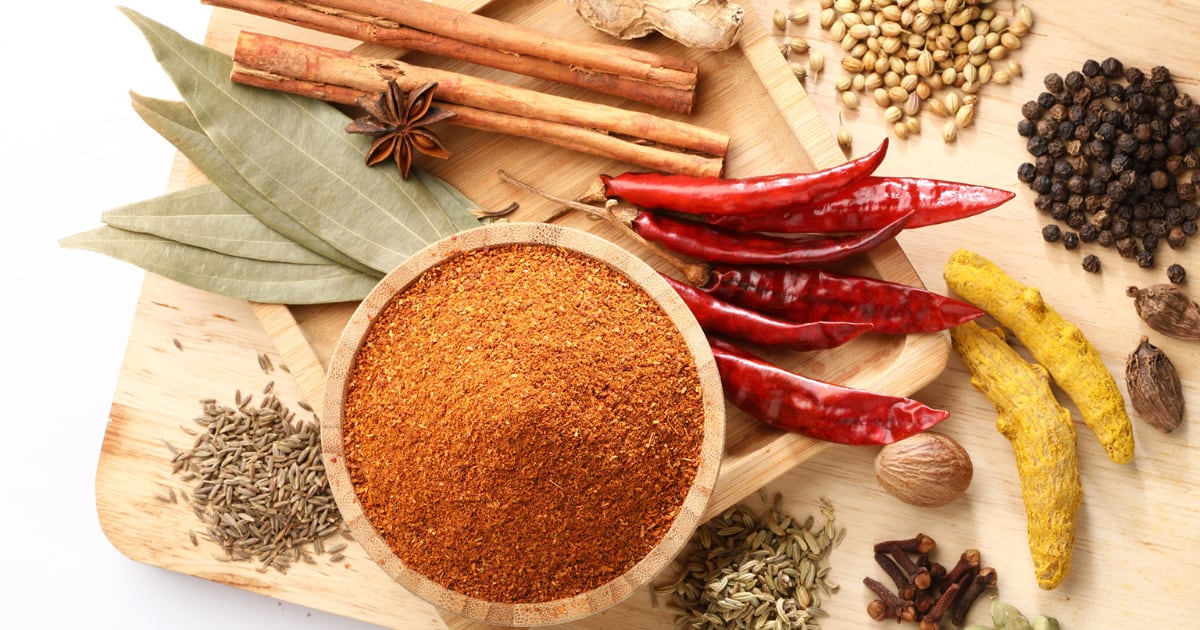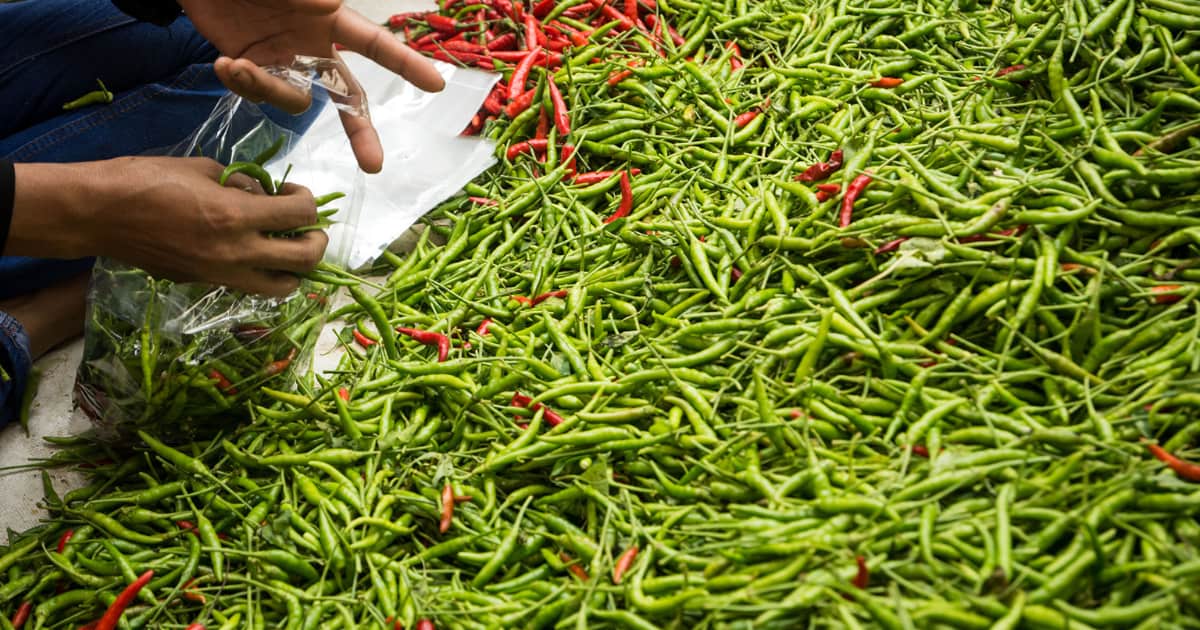Hello, spice lovers! Do you enjoy the heat of chili powder in your food? Do you know how this fantastic spice came to be? How it changed the world of cooking and culture?

Below you can learn about the origin and history of chili, the different kinds and flavors, and some tips and recipes to use it like a true chef.
Join me as we discover the truth of this aromatic and unique powder!
The origin of chili powder: where does it come from?
Chili peppers are the main ingredient of chili powder. They are fruits from the Capsicum family that grow in the Americas. They have a compound called capsaicin that makes them spicy. It is in the seeds and white pith of the pepper.
People have used chili peppers for over 6,000 years. But the world only learned about them in the 15th century. Christopher Columbus found them in the Caribbean and brought them to other places.
A brief history of chili powder
This versatile powder is a common ingredient in many cuisines, but do you know how it was invented?
It all started with William Gebhardt, a German immigrant who lived in Texas in the 19th century. He loved the spicy flavors of Mexican food and wanted to make them at home.
He began grinding dried chilies, cumin, oregano, and garlic into a fine powder and storing it in glass bottles. In 1892, he opened a factory in San Antonio and started selling his product as Gebhardt's Eagle chili powder. It was a huge success and soon became a household name in the US.
Today, you can find many different types, each with its own heat level and taste. It is a versatile and delicious spice with a long and fascinating history.
The Journey of chili peppers: from cultivation to chili powder
People grow chili peppers everywhere, from Asia and Africa to the Americas.
To get the proper heat and flavor, they choose the seeds carefully. Chili peppers need a lot of sun and warmth to grow well.
When they pick the chili peppers, they dry them to keep their taste and last longer. Chilies can be dried differently, like in the sun, oven, or dehydrated.

Then they grind the dried chilies into a fine powder. They use one kind of chili or mix different types for the powder. The powder's flavor and heat depend on which chilies varieties are used.
Different types of chili powder and their unique flavors
Chili powder comes in many varieties.
Here are some common types:
- Ancho chili powder: This is made from ground poblano dried peppers. It has a mild heat and a fruity flavor. You can use it in many dishes.
- Chipotle chili powder: This is made from smoked jalapeño peppers that are dried and ground. It has a medium heat and a smoky flavor. It adds a smoky kick to your dishes.
- Cayenne chili powder: This is made from ground cayenne peppers. It has a high heat level and a fiery flavor. Use it sparingly to spice up your meals.
- Thai chili powder: This is made from Thai bird's eye chilies that are dried and ground. They have a very high heat and a fruity flavor. They are common in Southeast Asian cuisine.
- Kashmiri chili powder: This is made from a blend of mild red chilies from India. It has a vibrant red color and a subtle heat. It is popular in Indian cuisine.
The Role of Chili Powder in Cuisines
Chili powder is a spice that many cuisines use, such as American, Chinese, Indian, Korean, Mexican, Portuguese, and Thai.
It is the main spice in chili con carne, a stew with meat, beans, and tomatoes.
Typical dishes that use chili powder
Chili powder can flavor different meats like beef, chicken, pork, and lamb. You can add it to soups, stews, casseroles, tacos, enchiladas, fajitas, curries, and sauces.
Here are some dishes that use chili powder:
- Chili con carne: A stew with meat, beans, tomatoes, and chili powder. You can eat it with rice, cornbread, cheese, sour cream, and onions.
- Tex-Mex chicken: A dish with chicken breasts covered with chili powder and baked. You can eat it with salsa, guacamole, and tortillas.
- Indian curry: A spicy dish with meat or vegetables in a sauce with onion, garlic, ginger, tomato, yogurt, and chili powder. You can eat it with rice or bread.
- Korean bulgogi: A dish with thin beef slices in soy sauce, sugar, garlic, sesame oil, and chili powder. You can grill or fry it and eat it with lettuce wraps or rice.
- Mexican mole: A complex sauce with chocolate, nuts, seeds, spices, and chili powder. You can eat it with turkey, chicken, or pork.
The regional and cultural differences in using chili powder
The powder varies depending on the region and culture.
Some things that make it different are:
- The kind of chili peppers: Chili peppers have different colors, shapes, sizes, flavors, and heat levels. Some examples are Cayenne, ancho, chipotle, jalapeño, and Piri Piri.
- The amount of chili peppers and other spices: Some blends are spicier and more potent than others. Some blends also have salt or sugar to balance the flavors. Common spices include cumin, garlic, oregano, paprika, and coriander.
- How to cook and use chili powder: Different cuisines use it differently. Some use it to flavor the meat before cooking, some use it while cooking, and some use it after cooking.
How to use chili powder in your cooking: tips and recipes
Here are some tips and recipes to spice up your dishes:
- Start small: Use a little of it first and add more as needed. You can't take it out once it's in the dish.
- Toast for flavor: Heat it in a dry pan over low heat to release its oils and aroma. Don't let it burn!
- Make your own: Grind dried chilies and mix them with your spices to create a chili powder blend.
- Use it in many dishes: It is versatile and can add flavor and heat. Use it in chili con carne, tacos, fajitas, enchiladas, soups, stews, and even chocolate desserts for a spicy twist!
Storing and preserving chili powder for maximum flavor
Storing it is vital to keep its taste and freshness.
Place a sealed container in a cool, dark spot like a cupboard or pantry. Avoid direct sunlight, heat, or moisture, which can ruin the flavor.
It can last up to two years if stored correctly, but use it within six months for the best taste.
Conclusion
Chili powder has a rich history and a global impact.
It comes in many types and flavors, so you can find one that suits your taste.
Whether you like mild heat or extreme spice, there's a fiery powder for you.
Don't be afraid to try it to spice up your dishes.
Your skills can make your meals more exciting and impress your friends and family.
Just use the right amount and blend of spices, and you'll create unique dishes.

